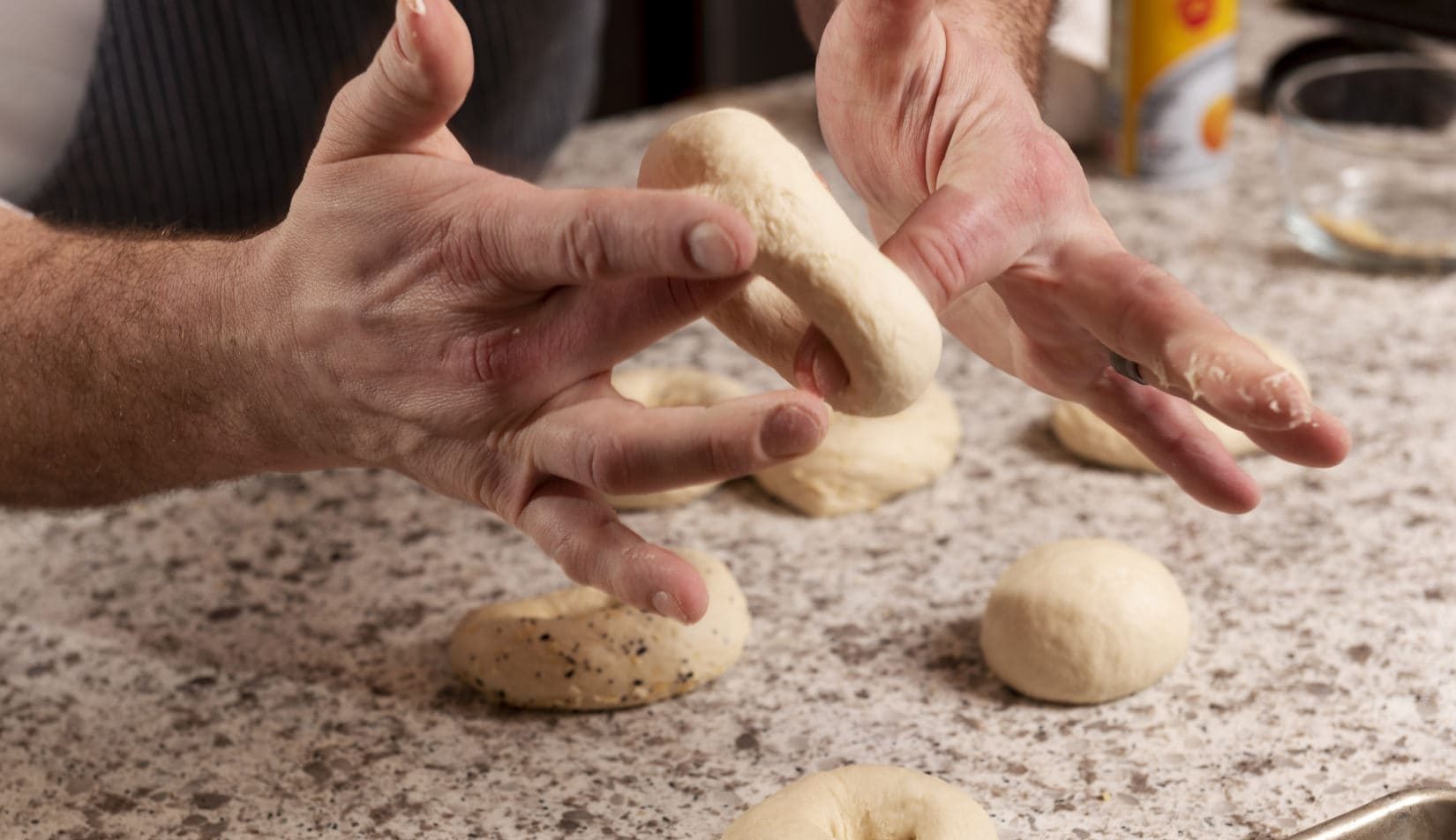Good bagels are hard to come by in the Midwest. Technology has helped us with many things, but automating procedures to help streamline the process can sometimes affect the result. Traditionally bagels were proofed, boiled, then baked. It is quite an involved process that can take up a lot of time and room. Some bakeries that don’t specialize in bagels now make them with ovens that first inject steam and then bake rather than boiling. This typically results in a thinner, more bread-like bagel, not as chewy. In my mind, not as good, but to each their own. I guess a bread-like bagel is better than no bagel.
You can make your very own bagels at home and control the flavor, size, toppings and chewiness. Just learn a few techniques. Like most baked items that you encounter, there is quite a bit of inactive time. This provides lots of time for slowing down the proof in the refrigerator and doing things like going to work. If you need more time, maybe go on a short vacation. If you need to speed things up, you can proof the dough on the counter or in a warm area and do something quick, like the laundry or a short outside task.
Bloom
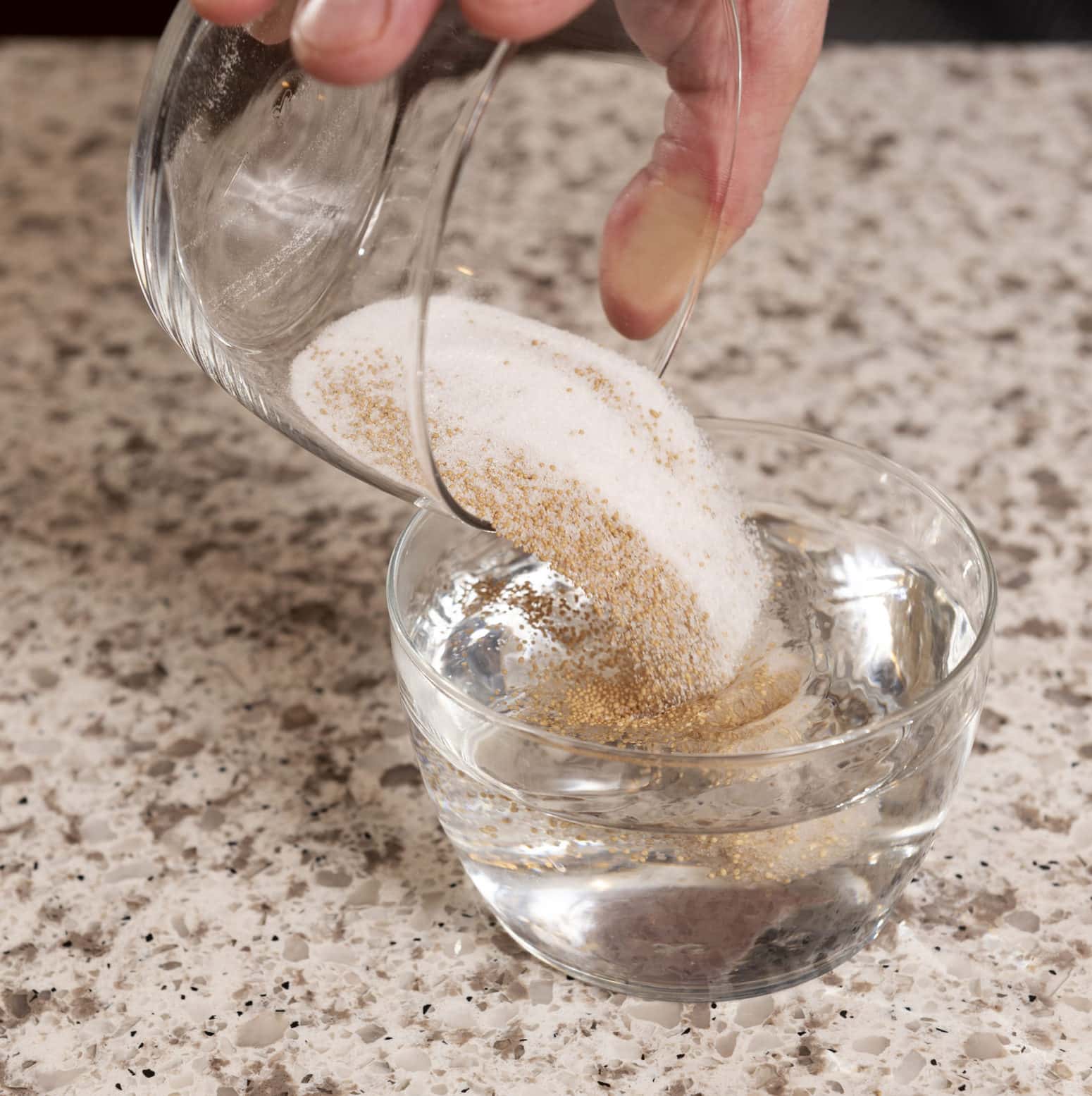
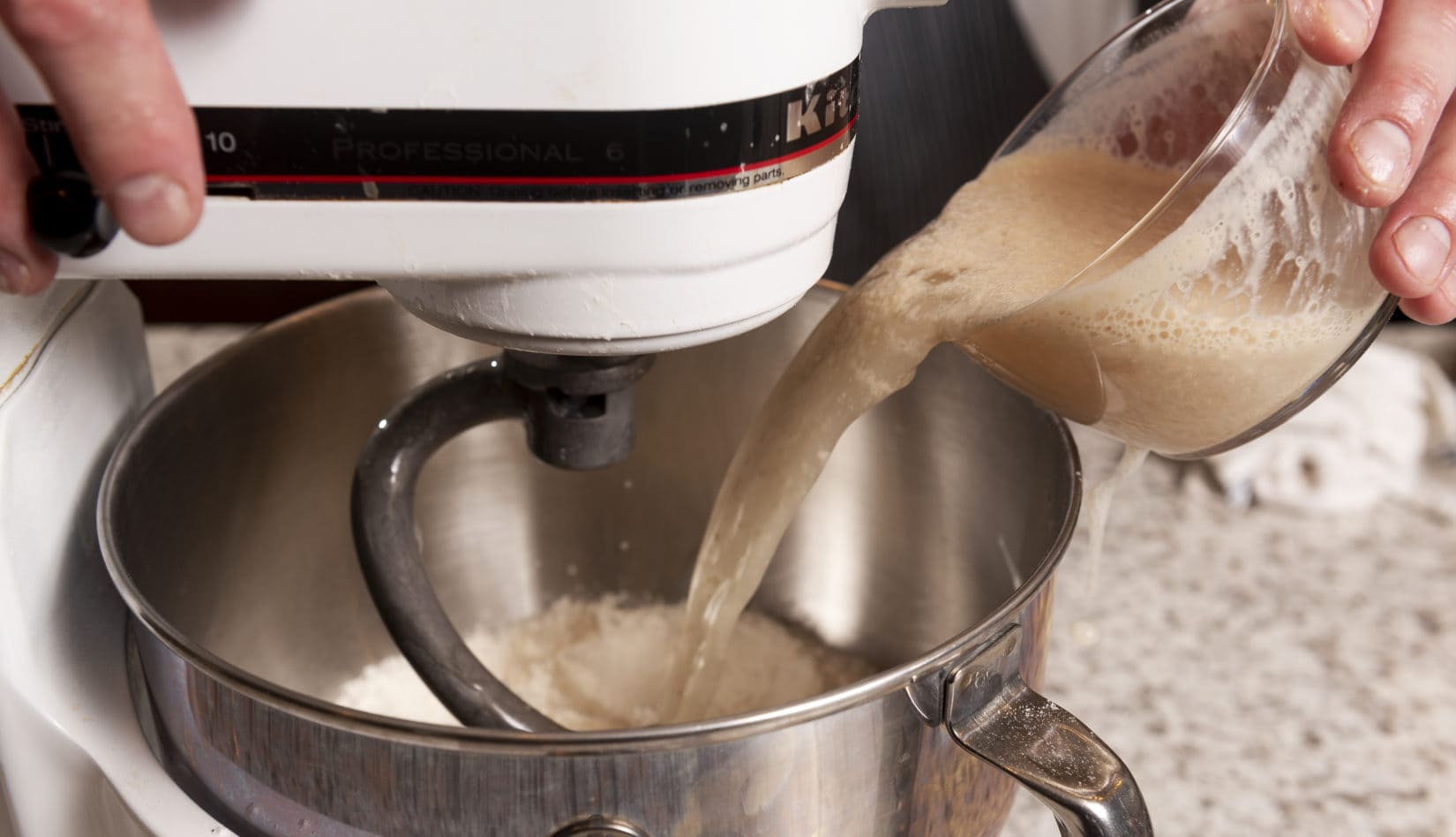
Mix
Gas is only part of the reason that the bagel puffs. Gluten is what gives the bagel the structure to retain the gas. It is flexible. You can do this easily by hand or with a dough hook on a mixer. Measure the flour, salt and sugar into a bowl, and add in the bloomed yeast, sugar and water mixture.
To mix using your hands: In a bowl, mix with your hand until the dough forms a shaggy mass. Place contents onto the counter and knead until smooth. This may take about 10 to 15 minutes.
To mix with a machine: Use the dough hook on the second to the lowest setting on a mixer and mix for 6 to 8 minutes. The dough should become smooth and pull off the sides into a smooth mass. The dough should be smooth to the touch, but slightly sticky.
Proof

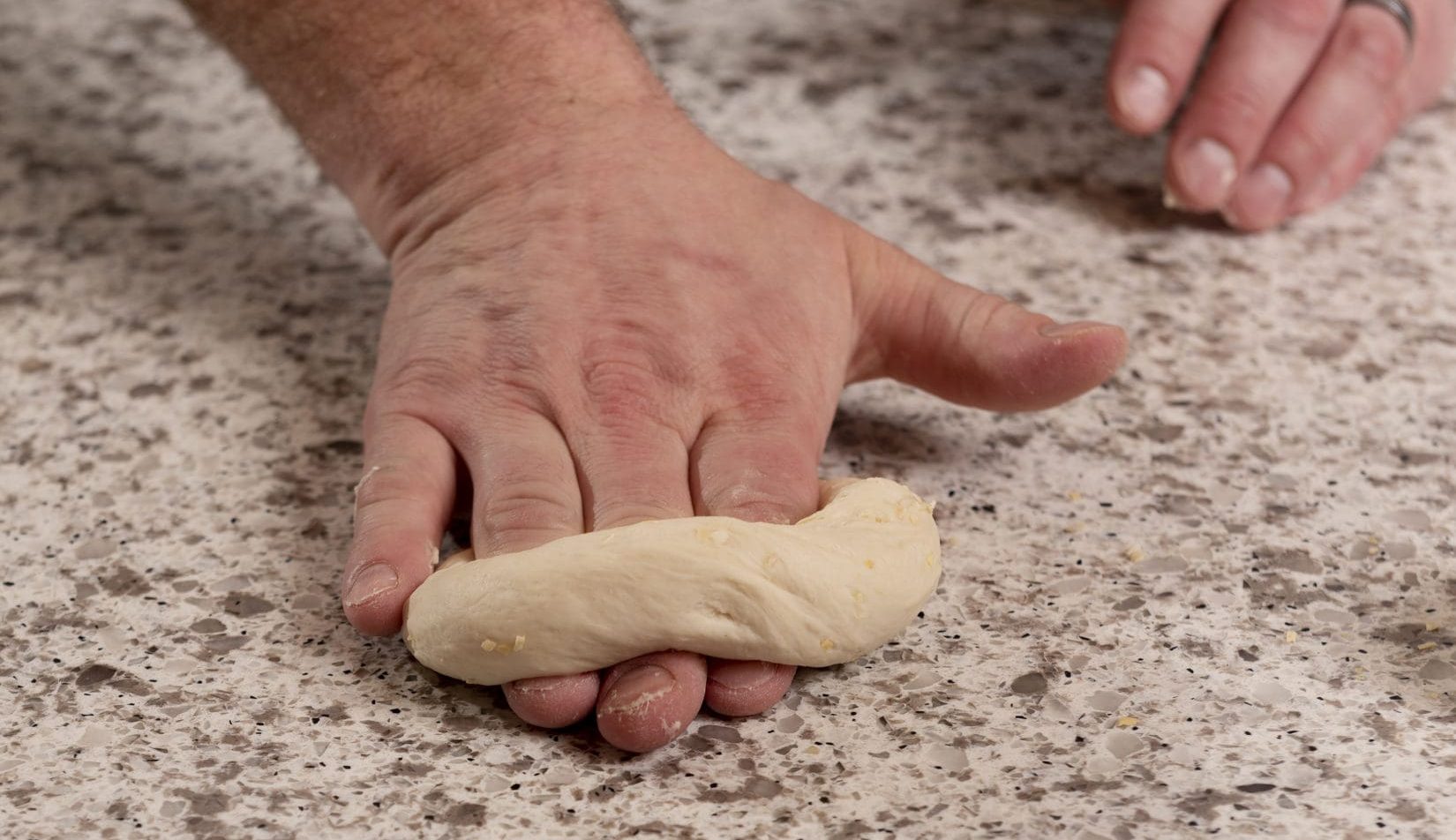
Shape
A single batch of this recipe makes eight bagels. Feel free to make the bagels large and make only six bagels, or smaller and make 10. You can just eyeball the size and use the knife or a dough cutter to equally portion the dough. If you want to proof then shape, or shape then proof, either are good options to let your dough proof longer and develop flavor.
There are a couple of different methods. You can do the traditional rope method by rolling the eighth portion to about an 8-inch rope with tapered ends. Wrap the dough around the middle of your fingers if have a large hand, and you have a smaller hand roll out using the palm of your hand overlapping the ends by about 2 inches. Roll the ends together back and forth a few times to seal, creating a ring. The second method is to roll the dough portion into a sphere and then gently use your middle and thumb to poke a hole in the center. Stretch the hole out to about an inch by spinning around a finger on each hand. The shaped bagels should proof for about 10 to 20 minutes before the next step. Test to see if the bagel is ready to boil. Place into a container of cold water, if it floats, it is ready to boil.
Boil
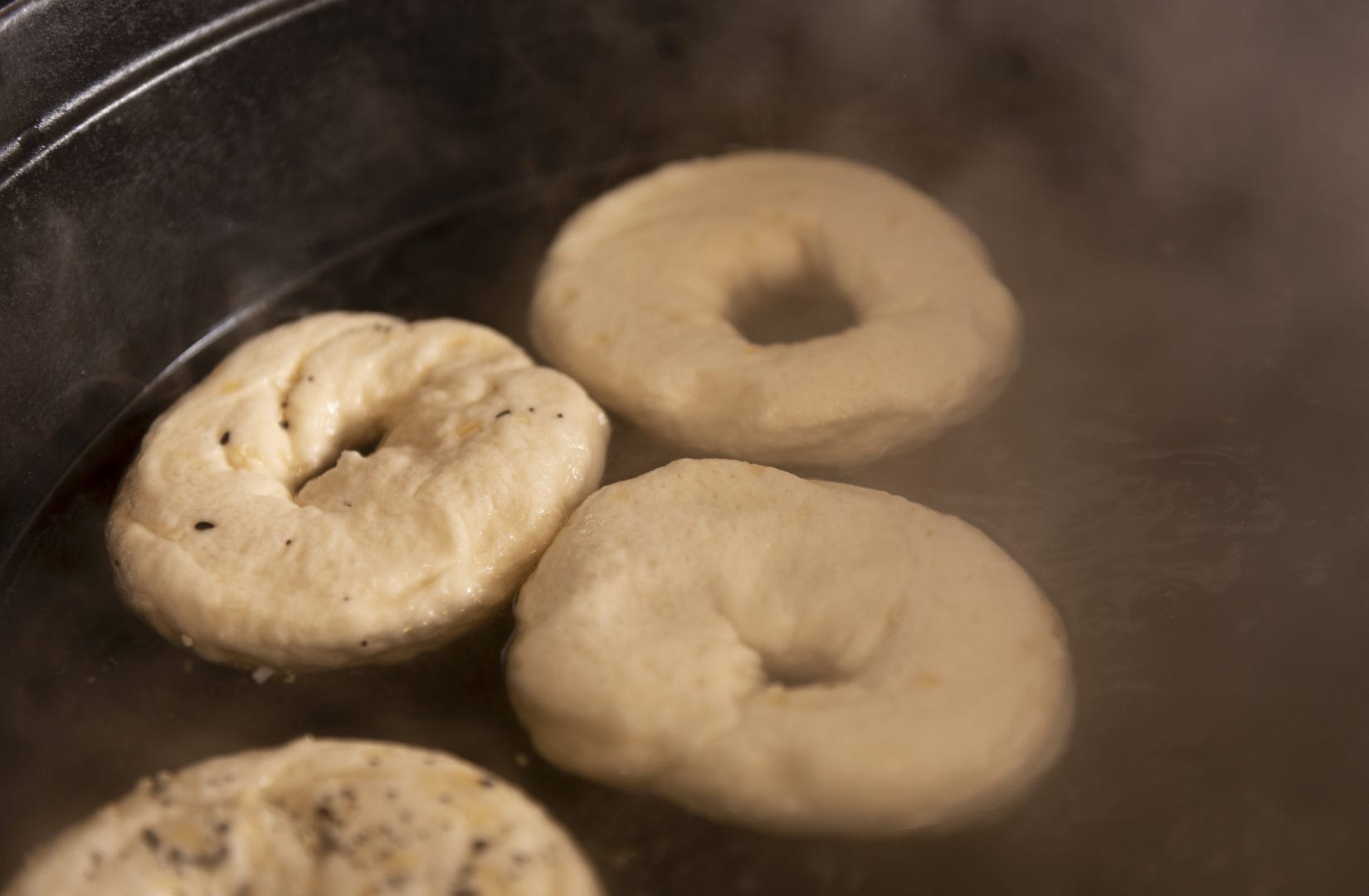

Top
Though both sides will look pretty wrinkly at this point, dip the smoother side into a beaten egg. It can then be sprinkled with the desired topping. Everything bagel mix, onion, mix in some cinnamon and sugar, poppy seeds, or keep it with simple with coarse sea salt. If you are doing several bagels at a time, it may be easier to dip into the toppings to coat the bagel. Toppings can go on top, both sides or get mixed in when shaping.
Bake

Everything Bagels
Bagel Dough
2 teaspoons yeast
2 tablespoons sugar
Rest 10 minutes to bloom until the yeast has multiplied and the top is frothy
2 teaspoons kosher salt
2 tablespoons sugar
Mix the second batch of ingredients with the bloomed yeast mixture and knead in a mixer with a dough hook or by hand on the counter (mix to a shaggy mass in a bowl first) until smooth. Allow dough to either proof for about an hour at room temperature or 8 to 72 hours in the refrigerator. Cut into roughly equal pieces for 6, 8 or 10. Roll into balls and shape as directed above. Place onto a baking sheet lightly oiled or sprayed with cooking spray. Cover with a heavily floured towel or plastic wrap lightly oiled with cooking spray. Allow to proof for about 10 to 20 minutes. The bagels are ready to bake when they float in a container of cold water. Egg wash and top with your desired topping. Bake at 400 degrees (375 for convection oven) for 12 to 16 minutes until golden brown (rotate about halfway though). Remove from the oven and cool on a rack for 15 to 20 minutes. Cut, toast, eat as is or schmear with cream cheese and enjoy as you desire.
Topping
½ tablespoon black sesame seeds
1 tablespoon sesame seeds
½ teaspoon dry minced garlic
½ tablespoon kosher salt
Mix all ingredients and store in an airtight container or bag until you are ready to top some bagels.
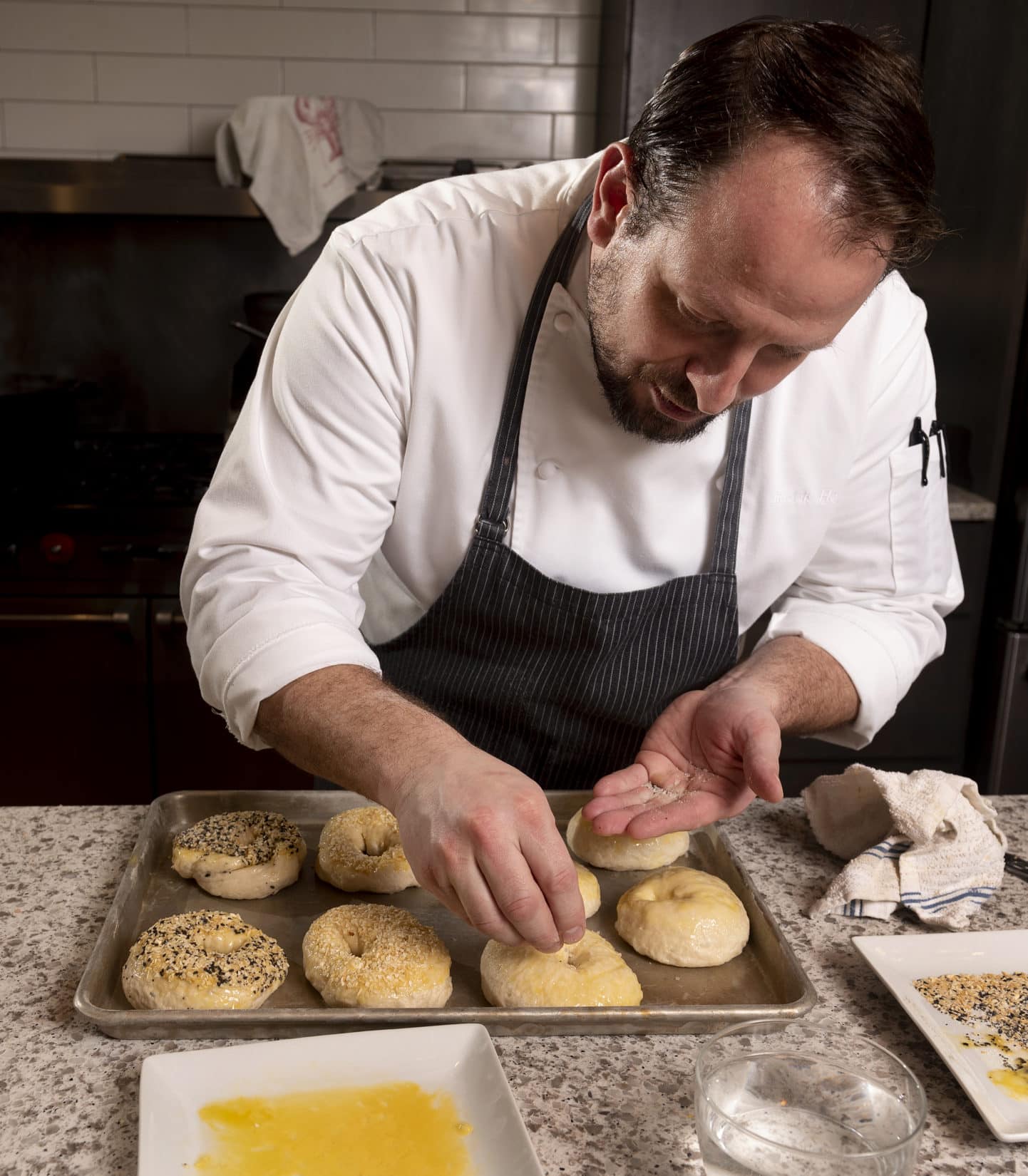
Brook Harlan is a graduate of the Culinary Institute of America in Hyde Park, New York. He is a culinary arts instructor at the Columbia Area Career Center.


